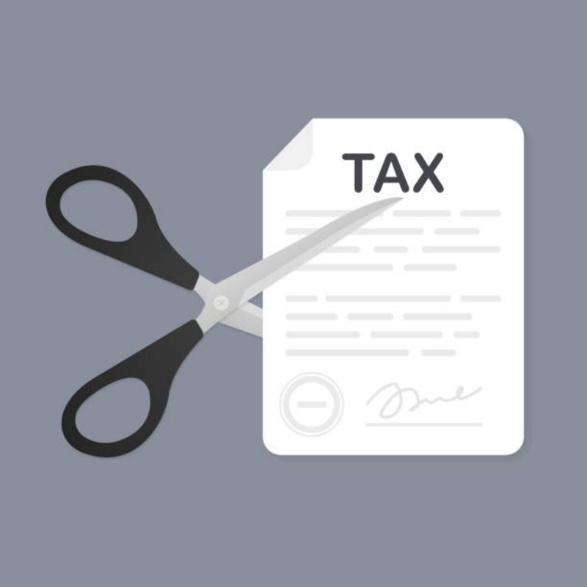Investing in assets and watching them appreciate is a rewarding experience, yet it comes with its own share of financial obligations. Among these is the inevitable capital gains tax - a levy imposed on the profit made from selling an asset that has increased in value. Although capital gains tax is a mandatory part of the investing landscape, there are strategies to mitigate its impact, thereby maximizing your overall returns. This guide aims to provide smart investors with a comprehensive understanding of these strategies, outlining key tips and tricks to effectively reduce your capital gains tax. By implementing these steps, you can better manage your investment portfolio and optimize the financial benefits of your assets.
Defining Capital Gains Tax

Before we dive into the tips and tricks to reduce capital gains tax, it's important to have a clear understanding of what exactly this type of tax entails. In simple terms, capital gains tax is a levy imposed on the profit made from selling an asset that has increased in value over time. This can include assets such as stocks, real estate, and even personal property such as artwork or collectibles. The amount of capital gains tax owed varies depending on the length of time the asset was held before being sold, with shorter holding periods typically resulting in higher tax rates.
Types of Capital Gains
Before implementing any tax-reducing strategies, it's important to know the different types of capital gains and how they are taxed. The two primary types of capital gains are short-term and long-term gains, each with their own tax rates.
- Short-term capital gains: These are profits made from selling an asset that was held for less than one year. In most cases, these gains are taxed at the same rate as your regular income, which can range from 10% to 37% depending on your tax bracket.
- Long-term capital gains: These are profits made from selling an asset that was held for more than one year. The tax rates for long-term gains are generally lower and can range from 0% to 20%, depending on your income level.
Knowing the difference between short-term and long-term capital gains can help you determine which assets to hold onto for longer periods of time in order to take advantage of lower tax rates.
Tips for Reducing Capital Gains Tax
Now that we have a better understanding of what capital gains tax is and how it is calculated, let's explore some tips and tricks for smart investors looking to reduce their tax burden.
Holding Investments Longer
One of the most effective ways to minimize capital gains tax is to hold onto your investments for longer periods of time. Long-term capital gains are taxed at lower rates than short-term gains, so by simply extending the holding period of your assets, you can significantly reduce your tax liability.
Investing in Real Estate
Another strategy for reducing capital gains tax is to invest in real estate. Under current tax laws, profits made from selling a primary residence are completely exempt from capital gains tax up to $250,000 for single taxpayers and $500,000 for married couples filing jointly. Additionally, you can also defer taxes on capital gains by utilizing methods such as 1031 exchanges or investing in real estate investment trusts (REITs).
Taking Advantage of Tax Relief Strategies
There are several strategies that investors can use to take advantage of tax relief and reduce their capital gains tax. These include:
- Tax-loss harvesting: This involves selling losing investments to offset the taxes owed on any capital gains.
- Investing in qualified opportunity zones: By investing in designated low-income communities, investors can defer or even eliminate their capital gains tax obligations.
Donating Appreciated Assets
Another way to reduce capital gains tax is by donating appreciated assets to charity. By doing so, you can deduct the fair market value of the donated asset from your taxable income, thereby reducing the amount of capital gains tax owed.
Utilizing Tax-Deferred Accounts
Investors can also utilize tax-deferred accounts such as Individual Retirement Accounts (IRAs) and 401(k)s to reduce their capital gains tax. These accounts allow investors to defer taxes on any profits made from selling assets until they withdraw the funds in retirement, potentially resulting in a lower tax rate.
Professional Guidance and Tax Planning
Ultimately, the best way to effectively reduce your capital gains tax is by seeking professional guidance and implementing a comprehensive tax planning strategy. Tax laws and regulations are constantly changing, so it's important to work with a financial advisor or tax professional who can help you navigate the complexities of the tax system and find opportunities for maximizing deductions and minimizing your overall tax liability.
In addition, proper tax planning can involve structuring your investments in a way that minimizes capital gains tax, such as spreading out the sale of assets over multiple years or utilizing tax-loss harvesting and other strategies to offset gains.
Conclusion
Capital gains tax is an inevitable part of investing, but by understanding how it works and implementing smart strategies, investors can effectively reduce their tax burden and maximize their overall returns. From holding assets for longer periods of time to utilizing tax-deferred accounts and seeking professional guidance, there are various ways to minimize the impact of capital gains tax on your investments. By implementing these tips and tricks, you can optimize the financial benefits of your assets and continue building a successful investment portfolio. So don't let the fear of capital gains tax hold you back from making smart investment decisions – with the right knowledge and planning, you can navigate the investing landscape and achieve your financial goals.





